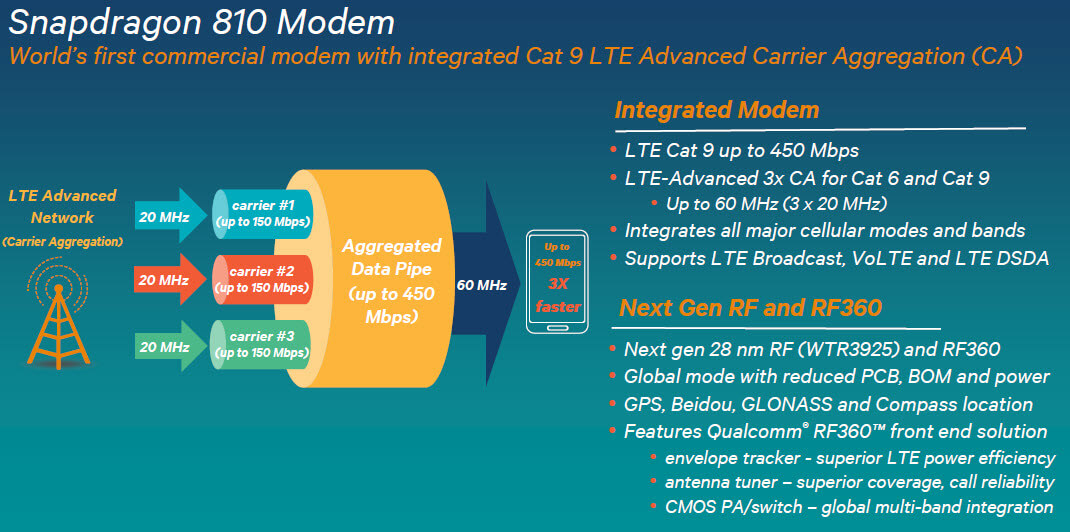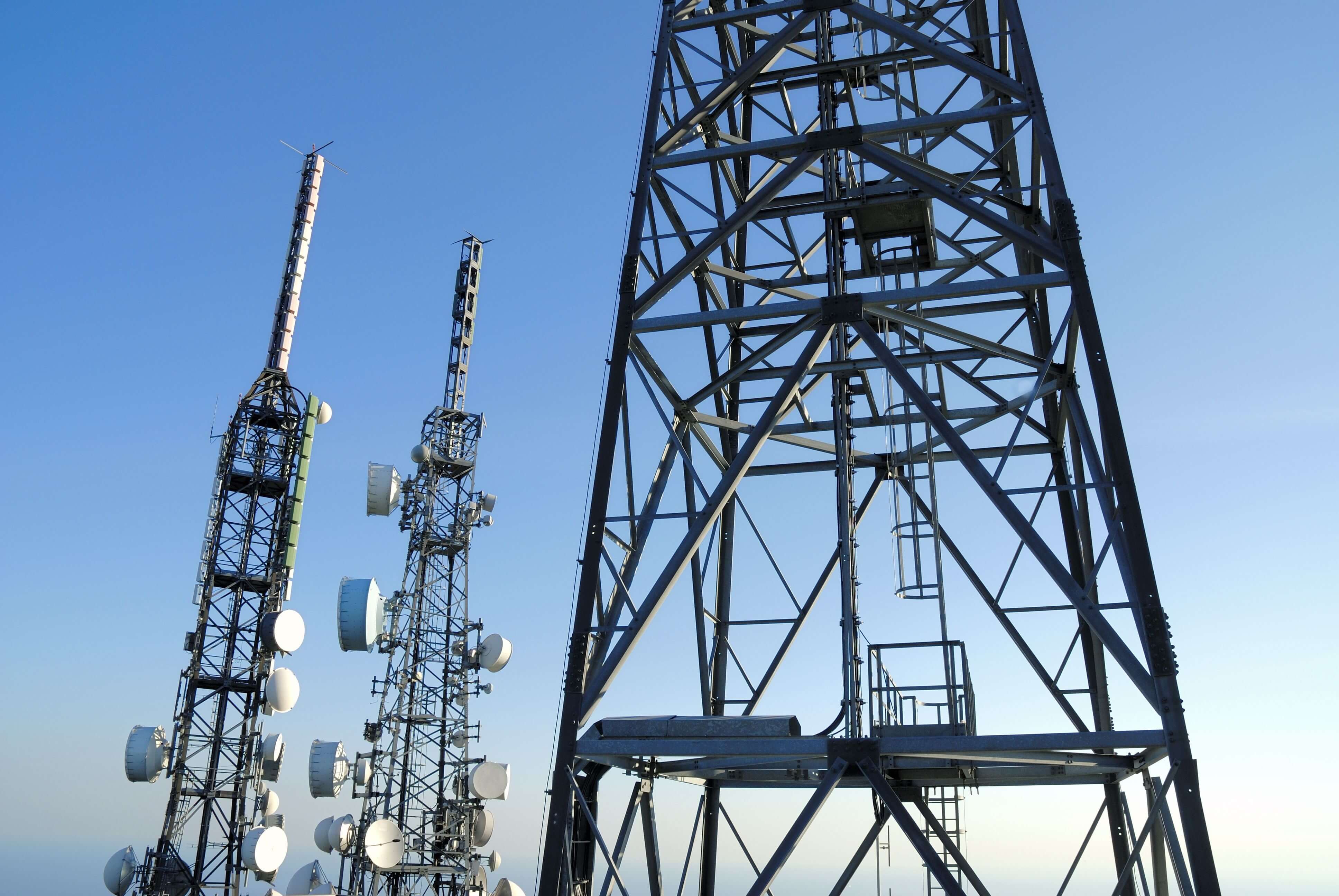One of the big improvements that is coming to mobile networks this year is Gigabit LTE. You might have heard of it already - companies are gearing up for deployments around the globe right now - but if not, it'll become a bigger talking point in the months to come. Gigabit LTE is set to hit everything from smartphones and laptops to portable hotspots and cars.
In this article, we'll be explaining what you need to know about the technology: how it works, what device you'll need to access Gigabit LTE, where it is coming, and more. Read on to learn about the immediate future in wireless technology.
What is the Technology Behind Gigabit LTE?
Gigabit LTE is an upgrade on existing cellular LTE technology that provides higher connection speeds. As the name suggests, Gigabit LTE is a form of LTE that's designed to hit approximately gigabit downstream speeds at peak in ideal conditions. In other words, it would be theoretically possible to download over a cellular network at near 1 Gbps, or 125 MB/s.
To be clear, "Gigabit LTE" only refers to gigabit-class peak downstream speeds in ideal conditions. In the real world, which we'll discuss later in this article, you won't necessarily hit 1 Gbps on your device. Furthermore, upstream speeds are not gigabit-class: current Gigabit LTE implementations are paired with 150 Mbps upstream connections, which translates to theoretical maximum upload speeds of 18.75 MB/s.

To fully understand the technology behind Gigabit LTE, we need to start by discussing older LTE implementations and the various terms related to LTE technology.
One of the easiest elements to understand is the naming scheme for LTE. Every few years, the standards group behind cellular technologies, the 3GPP (3rd Generation Partnership Program), releases an update to their standards. Part of these 3GPP Releases include updates to LTE technologies and specifications, aimed at improving peak speeds among other things.
Each 3GPP Release includes several new LTE user equipment Categories that define the various technologies required to achieve certain specifications. For example, 3GPP Release 8 included the LTE Category 4 specification, which outlined how 150 Mbps downstream and 50 Mbps upstream could be achieved.
Gigabit LTE refers to LTE Category 16 downstream, which was first introduced in 3GPP Release 12. Current implementations see Gigabit LTE paired with an LTE Category 13 uplink for 150 Mbps peak theoretical uploads.

One of the most common LTE specifications widely adopted by cellular networks and devices is LTE Category 4. To achieve its 150 Mbps downlink speeds, LTE Cat. 4 uses 64QAM and 2x2 MIMO on a single 20 MHz carrier.
You might be wondering what all those terms mean. Here is a simple explanation for you.
- QAM, or Quadrature Amplitude Modulation, describes the digital modulation used in the LTE channel. A higher QAM number indicates more bits are used for the transmission of each data symbol, and without going in to the complexities of modulation, more bits equate to faster speeds. As a trade-off, more bits (higher QAM values) are harder to receive and decode as the signal quality degrades.
- MIMO, or Multiple-Input and Multiple-Output, refers to (as far as we're concerned) the amount of antennas used in both the transmitting and receiving devices. 2x2 MIMO means the transmitter (the first number) and the receiver (the second number) both use two antennas. 4x4 MIMO, which we'll discuss later, uses four antennas for both. More antennas means faster speeds and greater reliability.
- The carrier is essentially the electromagnetic channel through which data is transmitted. The carrier has a size (bandwidth) in MHz, which refers to how much electromagnetic spectrum it consumes. The larger this bandwidth, the better performance you can achieve. LTE uses a maximum carrier bandwidth of 20 MHz.
- The band is the range of frequencies at which the carrier is transmitted. These values - simplified to a single frequency - are normally provided by your carrier, and are a key component to ensuring devices are compatible with networks. As an example, one of the most widely used bands is Band 3, which is listed at 1800 MHz but encompasses 1710 to 1785 MHz for transmission. A single LTE carrier would occupy up to 20 MHz of this band, for example from 1710 to 1730 MHz.
- Carrier aggregation (CA), which will become important later, is a system where multiple carriers are combined to improve throughput and speeds. 2xCA, for example, combines two 20 MHz carriers for a total of 40 MHz of bandwidth, effectively doubling the speed. These carriers are typically aggregated across bands rather than within a single band, such that 2xCA may use 20 MHz from the 1800 MHz band along with 20 MHz from the 2100 MHz band.
QAM, MIMO and CA are combined in various configurations for each LTE Category, resulting in their rated maximum speeds.
As an example, the baseline speed you can achieve using a single 20 MHz carrier, single antenna (no MIMO) solution with 64QAM is 75 Mbps. Category 4 LTE uses 2x2 MIMO, which uses two antennas thus doubling the maximum downlink speed to 150 Mbps.

The Snapdragon 810 SoC's modem supported Category 9 LTE, which introduced 3x20 MHz CA for the first time
Another more-recently implemented solution is Category 6 LTE. In the downlink, Cat. 6 LTE achieves 300 Mbps typically using a 2x20 MHz CA with 2x2 MIMO solution (although other configurations are supported). In the aforementioned case, we're seeing four LTE streams - two from each aggregated carrier multiplied by two antennas - at 75 Mbps each, for a total link speed of 300 Mbps.
Another step forward is Category 12 LTE, which isn't as widely deployed as Cat. 4 or Cat. 6 as it's much newer. Cat. 12 increases the carrier aggregation to 3x20 MHz CA, but to hit its listed 600 Mbps speeds, it also employs upgraded modulation: 256QAM. With 256QAM, each stream is 33 percent faster, going from 75 Mbps to 100 Mbps. With 3x20 MHz CA and 2x2 MIMO, Cat. 12 LTE uses six streams at 100 Mbps each, for a total of 600 Mbps.
If you've been following along so far, you'll notice a pattern. Each new LTE Category supports a faster downlink speed, and this is made possible by increasing the QAM, MIMO or CA levels. Gigabit LTE takes this to the extreme.

To achieve Gigabit LTE, 256QAM is implemented for 100 Mbps per stream. 10 streams are then used to achieve 1000 Mbps speeds, in a complex combination of technologies. The first eight streams are provided through 4x4 MIMO on 2x20 MHz CA (four antennas multiplied by two carriers). A further two streams are provided by 2x2 MIMO on an additional aggregated carrier, for a total of ten streams and three carriers.
In short, Gigabit (Category 16) LTE is 256QAM, 3x20 MHz CA, and 4x4 MIMO.
The actual rated downlink speed achieved through this combination of technologies is not quite 1 Gbps, but 979 Mbps. Later we'll discuss what sort of real-world speeds you can expect.
Paired with a Cat 16. LTE will be a Cat 13. LTE uplink in most situations, because Cat 16. LTE does not include its own uplink specification. Maximum upstream speeds of 150 Mbps are provided through 2x20 MHz CA and 64QAM (two 75 Mbps streams).

It's also worth mentioning Cat 16. LTE's secondary configuration, which doesn't require more complex 4x4 MIMO antenna arrays. Using 2x2 MIMO, 256QAM and 4x20 MHz CA, speeds of up to 800 Mbps are possible. This isn't quite Gigabit speed, but still far superior to most LTE networks deployed worldwide.
One of the advantages to Gigabit LTE is that by including support for technologies like 4x4 MIMO and 3xCA, even if you're not right next to a tower and able to achieve Gigabit speeds, you'll have the best access to whatever network is available in your area. Let's say you're just outside the city limits and there's only access to two carriers instead of three. If you're lucky and these towers support 4x4 MIMO, you could achieve up to 800 Mbps. If you're further out, it's possible to drop down to 64QAM and 2x2 MIMO across three carriers to still achieve 450 Mbps. Even more combinations are theoretically possible.
